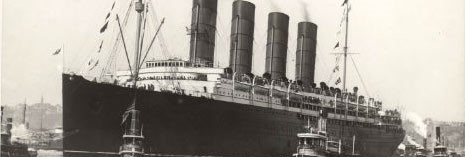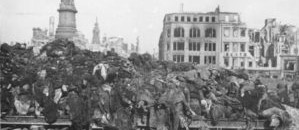Whilst many of the few survivors among the population of the British Isles from the comet of 562AD made the short sea journey to sanctuary in France or Gaul as it was still known at this time, as stated, a large group of hardy people under the leadership of the Khumric Prince Madoc ap Meurig, the brother of Arthur II, embarked on what must have been at the time a formidable and dangerous expedition westwards across the mighty Atlantic Ocean to the Americas. Were they aware that this landmass existed and were determined to escape the devastation they left behind by travelling to the furthermost known outpost of the earth or did they simply depart more in hope than expectation that they would find a more hospitable environment somewhere? We will never know for sure, but to simply head in a westward direction not knowing ‘when’ or even ‘if’ they would ever reach their ‘promised land’ would seem rather a prohibitive risk to take, to my mind. However, this is what they indeed did.
There are several detailed references to Madoc’s voyage in epic Khumric poetry of the time and also significantly in 1625, George Abbott, the Archbishop of Canterbury wrote a history in which he describes in detail the fact that a Welsh prince discovered America in the late 6th century. This was also the date ascribed to the event by Reuben T. Durrett of Kentucky in his book on ancient voyages to the Americas published in 1908.
In 1981, historians Alan Wilson and Baram Blackett decided to switch their focus from Ancient Egypt and Asia Minor to America in order to investigate Madoc’s alleged presence in that country and the results were absolutely conclusive. Evidence of Madoc and his people was to be found almost everywhere they looked. Their American colleague, Jim Michael of the ‘Ancient Kentucke Historical Association’ supplied a mass of information and data, photographs of likely sites and inscriptions upon rocks, cave walls and cliffs relating to the possible influence of the Khumry presence. These were inspected, examined and translated by Wilson and Blackett from the ancient British Coelbren alphabet which each site was found to possess in abundance. Michael also supplied many examples of ancient Native American records of a tribe or nation of ‘powerful White Men’ who seized their lands in what is now Kentucky. In addition to all this documentary evidence there were also the abundance of earth-banked hill-forts designed in typically British style that added their weight to the argument as also did the many Khumric-style tumuli, liberally scattered around the areas in question.
And as if that were not enough evidence to form an opinion as to the veracity of the story, many artefacts and rock-carvings were also discovered, written in Coelbren, bearing what were obviously Christian inscriptions and symbols, all of which were carbon-dated to the sixth and seventh centuries AD.
Madoc did not stay in America, however. He returned in about 572AD when the effects of the comet devastation were slowly starting to subside. His account of this vast new ‘unknown’ land were disbelieved by many and so the King sent out Admiral Gwenon to check Madoc’s incredible story of a land of huge rivers, mountains and plains. Gwenon indeed returned a year or two later and verified everything that Madoc had claimed to be true. As a result of this, a major expeditionary force was raised and set out in 574AD to return to the American continent.
So this is the account discernible from both the written records and the surviving artefacts of how America was really discovered by the Europeans, but the Normans and their successors, inhibited by the restrictions of fundamental Christianity imposed upon them by their Elite masters conspired to conceal the truth for a millennium to protect a huge lie. For the truth being brought into focus we owe much to the oft-maligned, Wilson and Blackett along with their colleagues such as Jim Michael. The catastrophe that was the Comet of 562AD and its aftermath were inconvenient episodes which did not fit into the decreed history and therefore were always dismissed out of hand or simply ignored. The pattern remains the same, always.





